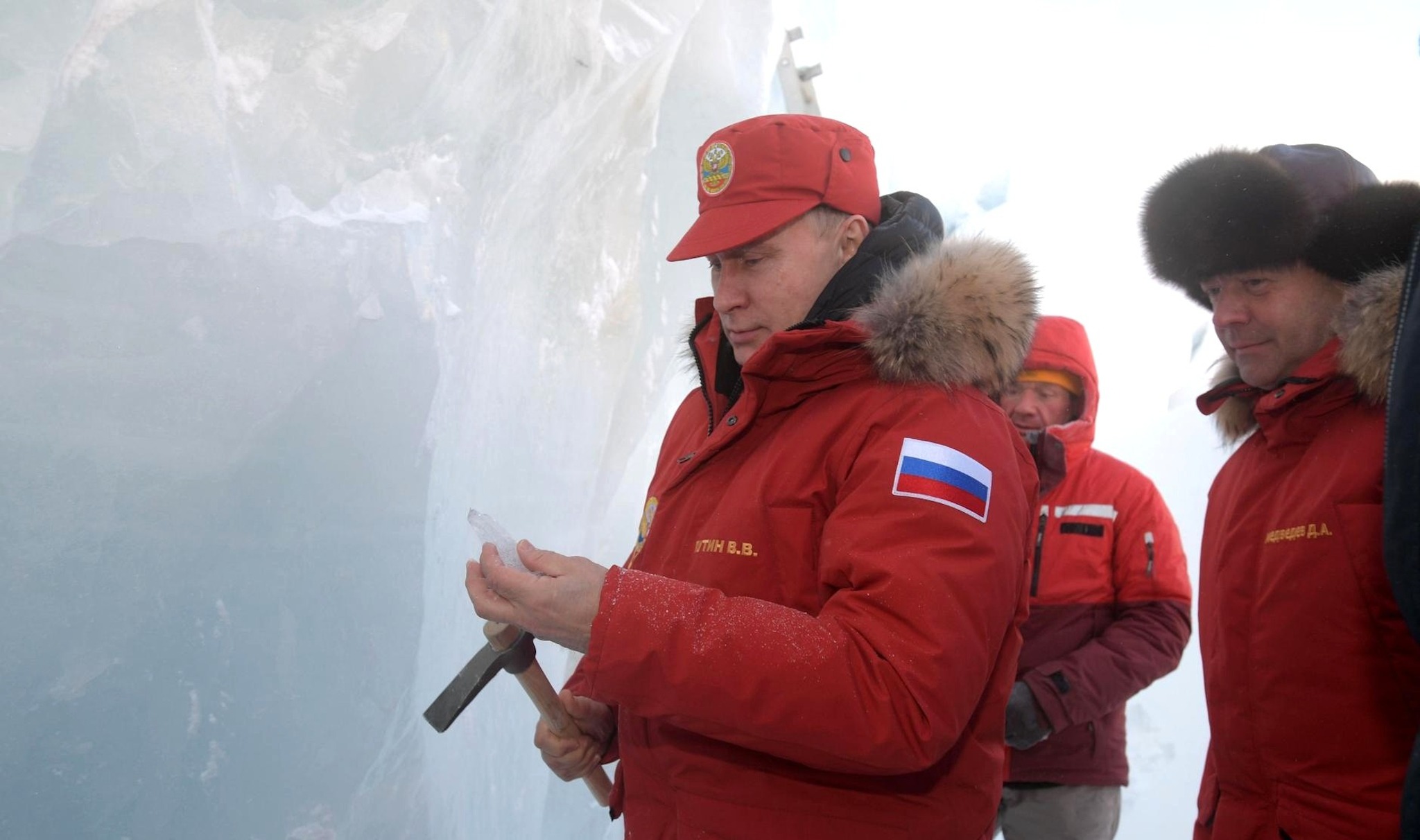Gavin Williamson claimed in 2018 when he was Britain’s defence secretary that the MOD had a new “Defence Arctic Strategy” that was already being followed by the navy.
“Russia, with more submarines operating under the ice and ambitions to build over 100 facilities in the Arctic, are staking a claim and militarising the region,” he warned. “We must be ready to deal with all threats as they emerge.”
Ice cap melting caused by climate change is seeing a so-called “scramble for the Arctic” as nations look to use the region for military exercises, new trade routes and prospecting for energy and minerals.
A 2017 report for the British embassy in Finland mapped out “opportunities for the UK in the Arctic” and identified the region’s energy reserves as a major area for potential investment.
It noted the Arctic contains 22% of the world’s undiscovered oil and natural gas and that there is also potential for the “mining and quarrying of minerals”.
Williamson, who served as defence secretary from 2017-19, claimed his new Defence Arctic Strategy was “central to the security of the United Kingdom” in light of potential international competition for previously inaccessible resources.
However, when Declassified asked to see a copy of the strategy, the MOD told us in late July 2021 that “while the development of this document was announced in 2018… work continues to refine the document in advance of publication.”
The MOD said the document “represents government policy still in development” and that releasing it in draft form risked “early thinking be[ing] exposed to adversaries”.
The department added the plan is “expected to be published in the coming winter” and would set out the UK’s “approach to the High North region.”
Mixed messages
Despite claiming the strategy is not ready, the MOD has previously said it was in operation.
In October 2018, ahead of a state visit by the King and Queen of the Netherlands, Williamson said: “Right now, our Royal Marines are working alongside their Dutch counterparts in Norway as part of the Defence Arctic Strategy, which shows our deep-shared commitment to European security.”
Months later, in February 2019, Williamson visited British marines on a winter training exercise in Norway, which the MOD said was “part of the Defence Arctic Strategy.” Williamson added: “The Arctic Strategy puts us on the front foot in protecting Britain’s interests in this expanding new frontier.”
Under the strategy, the UK’s Royal Marines were supposed to have “committed to a 10-year training programme with their Norwegian counterparts, which will see around 1,000 Marines travelling North each year.”
The British military has a long-established helicopter base (codenamed “Clockwork”) at Norway’s Bardufoss airport, deep in the Arctic Circle. The base is frequently used for mountain warfare exercises and lies 350 miles from the headquarters of Russia’s northern fleet in Severomorsk at north-western tip of the country.
Norway could be on the frontline of any future confrontation with Russia. With this in mind, the head of the RAF this May signed a “statement of intent on bilateral cooperation” with the Norwegian air force “addressing the importance of our commitment to the High North and the North Atlantic region, and cooperation across common capabilities.”
The move followed a “High Level Arrangement on cooperation on Polar Affairs” signed between Norway and the UK two months before, in March.
Other British military manoeuvers linked to the unpublished Defence Arctic Strategy include: RAF fast jet patrols over Iceland, a new fleet of nine P-8 Poseidon aircraft flying anti-submarine patrols over the Arctic from a base in northern Scotland, and increased “under-ice deployments” by Royal Navy submarines.
Closer cooperation with Scandinavian nations will be key to the plan, especially Denmark owing to its control of Greenland – the vast Arctic territory which houses a US air force base at Thule.
Denmark’s military operates a Joint Arctic Command which initially appeared willing to grant Declassified an interview about Britain’s role in the High North, before ignoring our questions.
Last October, Nato established a “new operational coordination arrangement” with Denmark’s Arctic command to allow greater exchange of surveillance information.
Britain’s intelligence agencies are likely to have some role in shaping the Arctic strategy. In 2016, then foreign minister Tobias Ellwood met Amanda Laurence from Brockwell MH, a London-based firm that “services the property and business requirements of high net worth individuals, private offices and other entities.”
The pair discussed “a unique land asset in the Arctic which they believe may hold national strategic, defence and intelligence interest for GCHQ.”


